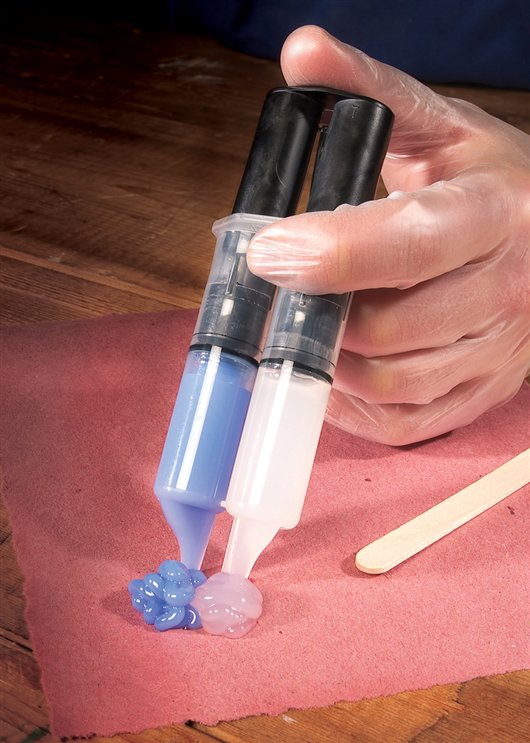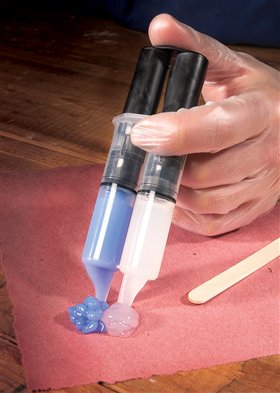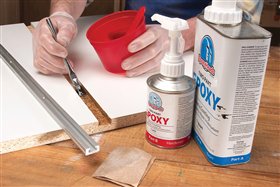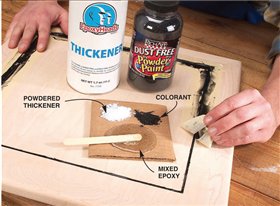We may receive a commission when you use our affiliate links. However, this does not impact our recommendations.
11 Tips for Using Epoxy
By Brad Holden
Epoxy is a specialty glue that does
more than simply stick wood
together. It also fills gaps. That
makes it ideal for tackling loose joints,
hard-to-clamp parts, repair work and
colored inlays. Besides that impressive
flexibility, it’s also useful for joining
wood to metal and for waterproofing
outdoor wood projects.
Follow some basic rulesEpoxy is a two-part glue: a hardener and a Working with epoxy does require that |
Click any image to view a larger version. |
Waterproof outdoor projectsWhen used as an undercoat Sources(Note: Product availability and costs are subject to change since original publication date.) Devcon, devcon.com, 800-933-8266, Fast- and slow-cure and gel epoxies. Loctite, loctiteproducts.com, 800-321-0253, Fast- and slow-cure and gel epoxies. Super Glue, pacertech.com, 800-538-3091, Fast- and slow-cure and gel epoxies. System Three Resins Inc., systemthree.com, 800-333-5514, Fast- and slow-cure and brushable epoxies and fillers. West System, westsystem.com, 866-937-8797, Fast- and Zap, pacertech.com, 800-538-3091, Fast- and slow-cure and brushable and gel epoxies. This story originally appeared in American Woodworker July 2005, issue #115. |
 |
Here are some supplies and tools we find essential in our everyday work around the shop. We may receive a commission from sales referred by our links; however, we have carefully selected these products for their usefulness and quality.
















